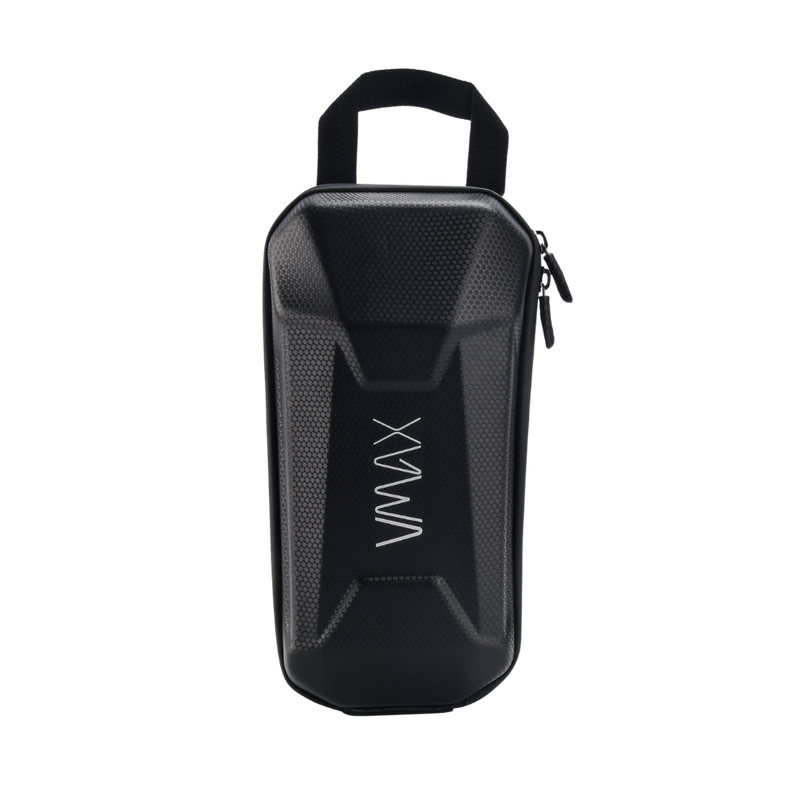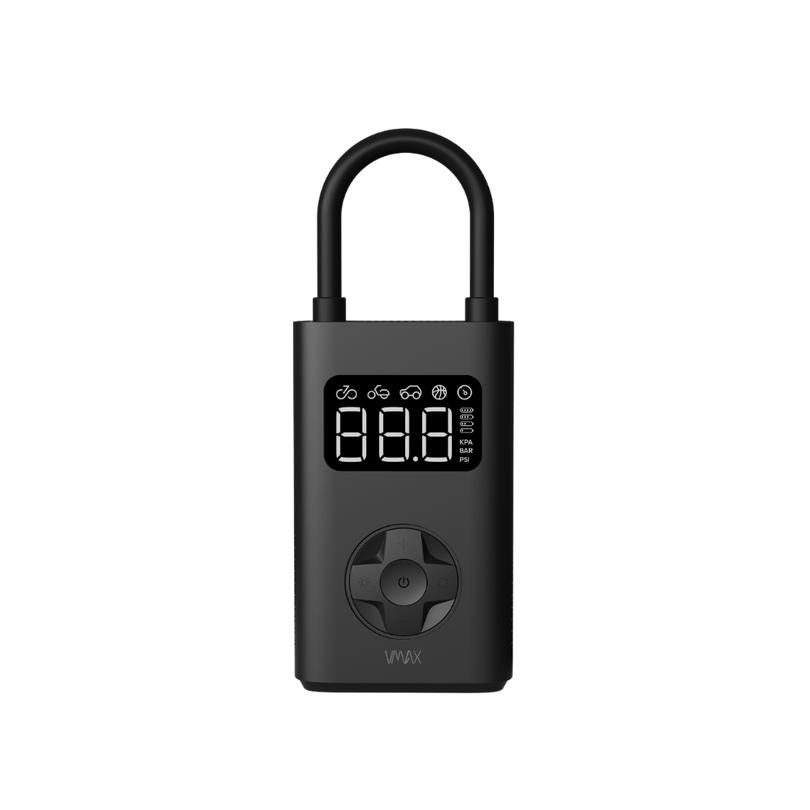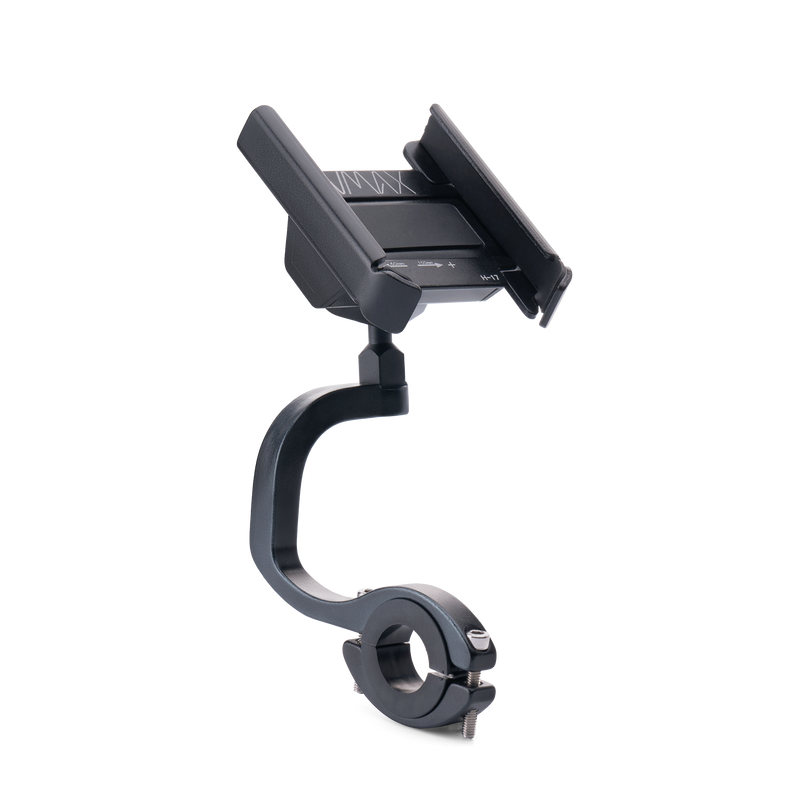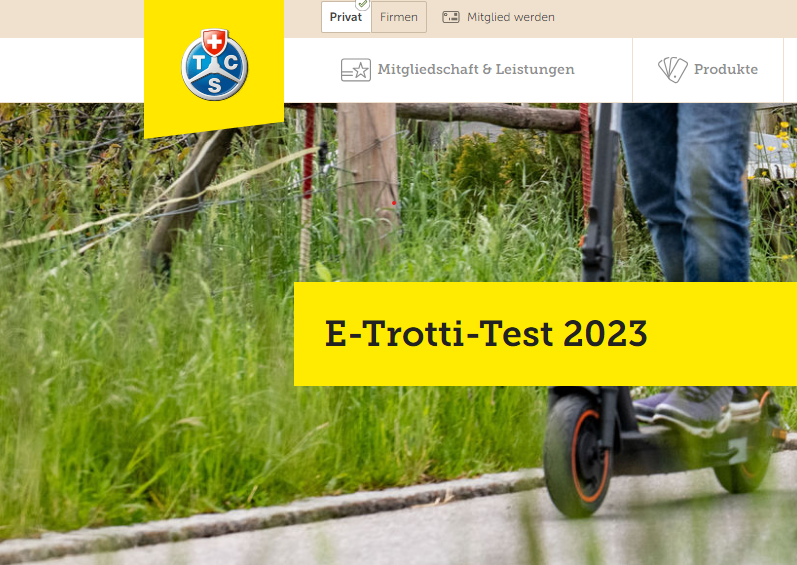Depending on which VMAX model you have purchased from the VX2 or VX3 series, you will either have an e-scooter with one or two brake levers at home. But what is behind the different number of brake levers and how does braking with your e-scooter actually work? This is the subject of this blog post, in which we explain the braking system and the exciting topic of recuperation:
Basically, every e-scooter in the VMAX VX2 and VX3 series has a mechanical drum brake at the front and an electronic recuperation brake at the rear.
These brake systems are controlled differently depending on the model. On the LT models in the VX2 and VX3 series, the single brake lever actuates both brakes simultaneously: Pulling the brake lever tensions a brake cable that is connected to the front drum brake. At the same time, a sensor is activated which triggers the rear recuperation brake.
On the ST and GT models of the VX2 and VX3 series, you have two brake levers available for braking. The left brake lever controls both brakes simultaneously, as usual. The right brake lever now allows you to specifically control the recuperation brake in the rear wheel. This allows you to better control the braking force yourself and helps to prevent wear on the mechanical brakes. Downhill riding is also a lot more pleasant, as the recuperation brake allows you to dose the speed well and you also provide a little more range thanks to energy recovery 😉. Incidentally, this can be illustrated very well with the VMAX Connect app. Simply recuperate a little downhill and in the app under Details you can see how the input power drops into negative territory.
However, it is important to note that the recuperation brake is not a standstill brake, but is only intended to recover energy and gently reduce speed.
Therefore, please note that it is designed to prevent you from accelerating even faster when riding downhill and not to bring you to a standstill as quickly as possible. This only happens after 8-9 meters.
So if you want to brake to come to a standstill or need to perform an emergency stop, please use both braking systems.
But how do the two braking systems actually work?
Drum brake:
With the drum brake, a brake drum is firmly connected to the wheel and rotates with the rotation of the wheel. Inside this brake drum, which is firmly connected to the e-scooter on the brake anchor plate, there are two brake shoes, a spring and a wheel cylinder. The outward-facing brake shoes do not touch the inside of the brake drum, but are pressed inwards by springs that are connected to the wheel cylinder.
When you actuate the brake on the handlebars, a cable is tensioned, which causes the wheel cylinder to expand. When this wheel cylinder expands, the springs are pressed outwards, causing the brake shoes to be pressed against the inside of the brake drum. This friction of the brake linings exerts a braking force on the brake drum and thus also on the wheel connected to it, causing the wheel to slow down. If you now take the tension off your brake lever, the brake contracts and you can continue riding without braking ;)
Recuperation brake:
With the recuperation brake, the motor of the VMAX serves as an energy-converting generator during braking. You activate the braking process by pulling the left or right brake lever. This activates the recuperation brake in the electric motor via a sensor.
In general, electric motors generate a torque that causes the tire to rotate by applying voltage to an electromagnet in a magnetic field and the resulting Lorenz force. When braking with a recuperation brake, this kinetic energy, or kinetic energy of the vehicle, is converted back into electrical energy. This is achieved by using the rotational energy of the wheel to move an electrical conductor in the motor, which now acts as a generator. The resulting induction leads to an electrical voltage and thus to energy. The electrical energy generated is fed to the battery, recharges it and you can enjoy a longer ride on your VMAX e-scooter.
Nevertheless, a recuperation braking system does not turn your e-scooter into a perpetual motion machine, as energy is lost in the form of heat during each conversion due to electrical resistance.
That was our blog post on the subject of brakes and braking systems for your e-scooter. We hope that you were able to take something away with you and now know a little more about the brakes of your e-scooter.
See you next time without brakes,
Your VMAX team.















